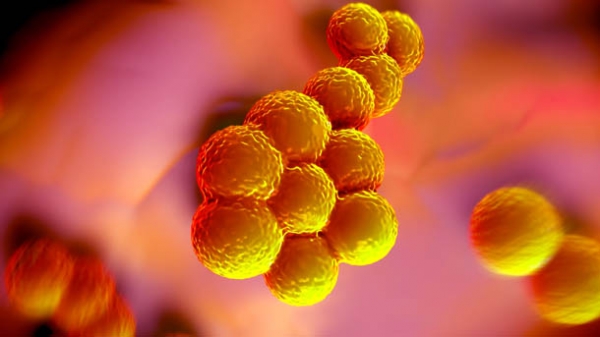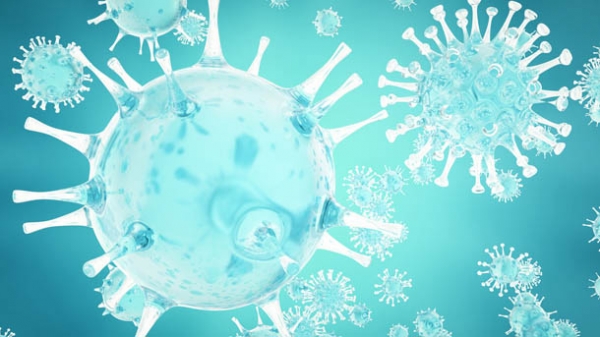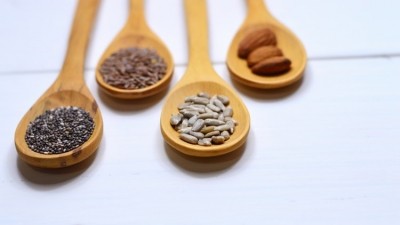11 food contaminants that could kill your customers

Recent cases include pub giant JD Wetherspoon pulling steaks from its menus after its supplier, Russell Hume was investigated by the Food Standards Agency in January.
In the same month, a Hampshire pub received the lowest food hygiene rating possible and needed urgent improvement to the cleanliness and conditions of its facilities.
In March, a Dorset pub received a zero food-hygiene rating after a food safety inspection found a slug on a packet of raw chicken among a slew of other hygiene offences.
Inspectors from Christchurch and East Dorset Councils visited Ye Olde Starre Inne, Purewell in Christchurch on 26 January this year.
The Morning Advertiser contacted the pub at the time, but did not receive a response at time of publication. However, the Bournemouth Echo reported that licensee Chloe Frost, said the establishment was undergoing a refurbishment at the time of the visit and renovations are still ongoing.
She added: “All our records and the management side is up to date now. All of our meat is fresh produce and vegetables are cooked and prepared on the day.
“The out-of-date food that was found was never served to any customers. We used to use the kitchen for our personal cooking, but nothing out-of-date was served to customers.
“We don’t do food every day so it is difficult at times to do the records. The raw chicken was in the bin and not on the kitchen side or ever used.”
A follow up inspection has been planned and a number of revisits, since the initial inspection have also been carried out.”
British Hospitality Association (BHA) food safety adviser Lisa Ackerley outlined how much of a minefield the various food safety hazards can be.
She said: “Food safety controls need to cover not just microbiological issues, but also chemical, physical and allergenic hazards.”
Ackerley previously told The Morning Advertiser that everyone needs to be on the lookout for food fraud and ensure they get what they ask for.
Supply chain control
She said: “Supply chain control is critical. If it’s too cheap to be true, it is probably fraud or there is something wrong with it – don’t take risks, and be aware of the fact that there will always be someone trying to make money illegally from food.”
The food safety expert also outlined how operators can help prevent any issues from taking place, whether it is chemical, physical, allergenic or microbiological.
Ackerley said: “A good food management system will cover all issues because it is a systematic way that food businesses can consider all the hazards in the business and ensure that they control them.
“For example, in situations where it is paramount for safety that a hazard is controlled at a certain point, like cooking a chicken to 75°C because it kills bacteria such as Campylobacter."
Hazard protection
She added: “By having a robust food safety management system, the business is protecting itself and its customers from illness caused by the various food safety hazards that naturally occur.
“How to do this effectively is detailed in the BHA’s Industry Guide to Good Practice (Catering) 2016.
Food safety, allergens and cleaning can have devastating consequences to businesses so find out how not to hit the headlines with some crucial safeguarding tips here.
Last month (May), the BHA advised operators on the top five food-safety issues to be aware of this summer including barbecuing, serving outside, temperatures in the kitchen, food deliveries and fridge temperatures.
The 11 food contaminents operators need to look out for are:
1. Hepatitis E
A new strain of Hepatitis E (HEV) was linked to pig farms in Holland, France, Denmark and Germany.
According to Public Health England, HEV is a virus that, in rare cases, can prove fatal, particularly in pregnant women and transplant cases.
2. E. coli
Public Health England recorded 151 strains of E. coli across the UK last year. There were 62 individuals who required hospital care after contracting E. coli.
Health experts urged operators to be vigilant and “wash all salads” when preparing and serving mixed salads after two people died.
3. Salmonella
Dangerous salads aren’t just at risk of E. coli because Salmonella can also be found in salad leaves, according to academics.
Green salad juices found in bagged salads can encourage the growth of the bacteria, which enables Salmonella to grow in water.
4. Listeriosis
Listeriosis is caused by the bacterium listeria, which is mainly spread through contaminated food and most commonly found in unpasteurised milk and dairy products made from unpasteurised milk.
Listeria can be found in food manufacturing environments and can contaminate food products after production.
Contamination can occur after the food is cooked but before it is packaged, and when food is handled such as on slicing machines.
Those over 65 years of age, pregnant women and their unborn babies, babies under a month old, and people with a weakened immune system are at an increased risk of developing Listeriosis.
5. Allergens
Allergens are something operators need to take seriously, particularly after a restaurateur’s conviction of manslaughter by gross negligence and jailed for six years after a customer died following a severe allergic reaction after ordering and eating a nut-free curry.
- Cereals containing gluten
- Crustaceans
- Molluscs
- Eggs
- Fish
- Peanuts
- Nuts
- Soya
- Milk
- Celery
- Mustard
- Sesame
- Lupin
- Sulphur dioxide at levels above 10mg/kg or 10mg/litre
6. Acrylamide
While food safety expert Lisa Ackerley explained that acrylamide hasn’t been the cause of death, the European Food Safety Association previously said the chemical compound can increase the risk to the nervous and reproductive system.
Acrylamide is created when foods – particularly starchy products such as bread and potatoes – are cooked at a high temperature for an extended period of time.
To reduce the risk of acrylamide, businesses can cook foods to light rather than dark colours, fry foods at lower temperatures, decrease cooking times where possible, avoid overheating oils and fats, and changing frying oils and fats more regularly.
7. Campylobacter
This is the most common cause of food poisoning in the UK as according to the Food Standards Agency, it is considered to be responsible for more than 280,000 cases of food poisoning each year.
A Campylobacter risk management programme has been developed to reduce levels of the bacterium in chicken.
The programme encompasses a range of projects targeted at different points across the food chain, from farm to fork.
8. Clostridium Perfringens (C. perfringens)
This bacterium is widely distributed in the environment and foods, and forms part of the normal gut flora in humans and animals.
Spores survive cooking, and during slow cooling and unrefrigerated storage, germinate to form growing cells.
C. perfringens is responsible for 80 to 95% of cases of gas gangrene, a rare but very severe form of gangrene (tissue death).
Investigations into why more than 60 diners at a Somerset pub fell ill have discovered the cause as C. perfringens.
The Old Farmhouse in Nailsea, north Somerset, which is operated by Hall & Woodhouse, kept its kitchen shut while investigations by North Somerset Council and Public Health England (PHE) continue but has now reopened.
At the time, a spokesperson for the pub company said: “Hall & Woodhouse has been made aware that a number of guests visiting the Old Farmhouse, Nailsea, on Sunday, subsequently became ill with sickness and diarrhoea.
“This pub is one of our Business Partnerships and although we are not directly responsible for the pub, we are supporting the business partner during this time."
“We understand that in the interest of guests, the business partner has closed the public house and will reopen once they are completely satisfied that it is safe to do so.”
9. Norovirus
Norovirus spreads very easily in public places and can be contracted from small particles of vomit or faeces from an infected person reaching the mouth of others through eating contaminated food.
This can happen if an infected person doesn’t wash their hands before handling food.
10. Staphylococcal aureus (Staph)
Another gastrointestinal illness caused by eating foods contaminated with toxins produced by the bacterium Staphylococcal aureus.
People who carry Staph can contaminate food if they don’t wash their hands before touching it and it can be found in unpasteurised milk and cheese products.
Because it is salt intolerant, it can grow in salty food like ham, and foods at highest risk of transmitting Staph toxins are those that people handle and then do not cook such as sliced meat, puddings, pastries and sandwiches.
Operators should be aware that food contaminated with Staph toxin may not smell bad or look spoiled.
11. Bacillus cereus
The spores of Bacillus cereus bacteria commonly contaminate raw food and food materials, particularly foods in contact with soil or of vegetable origin.
The spores can survive cooking and subsequently germinate and grow under favourable conditions, particularly in warm kitchens.
Have we missed anything? Contact avxxvr.fhggba@jeoz.pbz


















